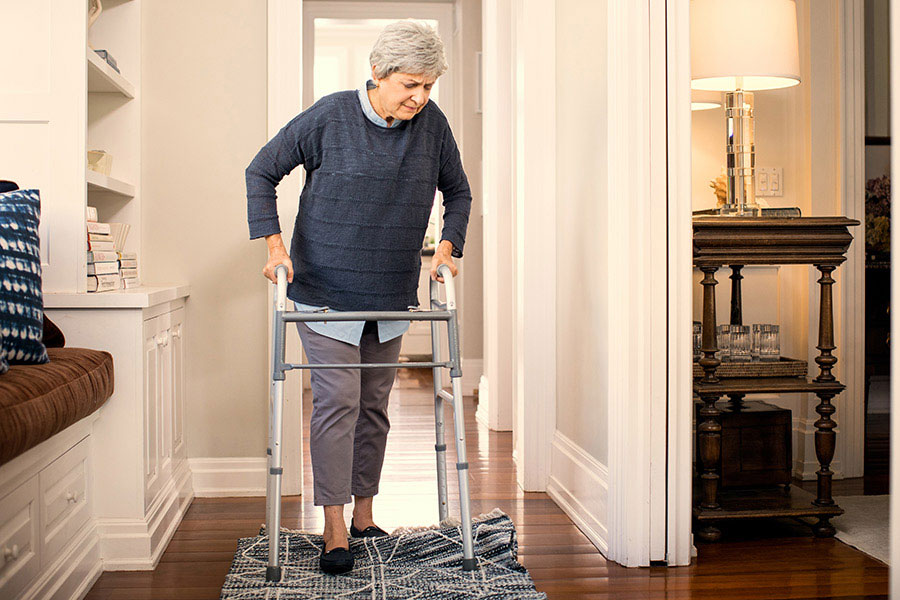As a caregiver, one of the most important responsibilities is ensuring the safety and well-being of your loved ones, especially when it comes to preventing falls. Falls are a common and serious issue among seniors, often leading to injuries and a decline in independence. In this article, we will explore essential fall prevention tips for caregivers to help you minimize the risk of falls and create a safer environment for the seniors you care for.

Understanding the Risk of Falls
Falls are a leading cause of injury among seniors, and understanding the risks is crucial for caregivers. Factors such as age-related changes, medical conditions, and environmental hazards can all contribute to the likelihood of a fall. By recognizing these risks, caregivers can take proactive steps to prevent falls and protect their loved ones.
Age-Related Changes
As we age, our bodies undergo various changes that can increase the risk of falls. These changes may include decreased muscle strength, impaired balance, and vision problems. Caregivers should be aware of these changes and work with seniors to address them through exercises and regular check-ups.
Medical Conditions and Medications
Many seniors have chronic medical conditions such as arthritis, diabetes, or heart disease, which can affect their mobility and balance. Additionally, certain medications may cause dizziness or drowsiness. Caregivers should stay informed about the potential side effects of medications and consult healthcare professionals when necessary.
Creating a Safe Home Environment
One of the most effective ways to prevent falls is by creating a safe home environment. This involves identifying and addressing potential hazards that could lead to a fall.
Remove Tripping Hazards
Clutter, loose rugs, and uneven flooring are common tripping hazards in the home. Caregivers should ensure that pathways are clear and that rugs are secured with non-slip backing. Additionally, repairing any uneven flooring can significantly reduce the risk of falls.
Install Proper Lighting
Good lighting is essential for preventing falls, especially in areas like stairways and hallways. Caregivers should ensure that all rooms are well-lit and that nightlights are installed in bedrooms and bathrooms to help seniors navigate safely at night.
Use Assistive Devices
Assistive devices such as grab bars, handrails, and walkers can provide added support and stability for seniors. Caregivers should assess the needs of their loved ones and install these devices where necessary to enhance safety.
Encouraging Physical Activity
Regular physical activity is crucial for maintaining strength, balance, and coordination, all of which are essential for preventing falls. Caregivers can help seniors incorporate exercise into their daily routine.
Balance and Strength Exercises
Exercises such as tai chi, yoga, and resistance training can improve balance and strength. Caregivers can encourage seniors to participate in these activities, either through classes or online tutorials.
Walking and Stretching
Simple activities like walking and stretching can also be beneficial. Caregivers can accompany seniors on short walks and assist with stretching exercises to promote flexibility and mobility.
Monitoring Health and Medications
Regular health check-ups and medication reviews are essential for fall prevention. Caregivers should coordinate with healthcare providers to ensure that seniors receive appropriate care and that medications are managed effectively.
Regular Vision and Hearing Checks
Vision and hearing impairments can contribute to falls. Caregivers should ensure that seniors have regular eye and hearing exams to detect any changes and address them promptly.
Medication Management
Caregivers should keep track of all medications and be aware of any side effects that may affect balance or coordination. Consulting with healthcare professionals can help manage medications safely.
Building a Supportive Caregiving Community
Caregiving can be a challenging role, and building a network of support is essential. Caregivers can benefit from connecting with others who share similar experiences.
Support Groups
Joining a caregiver support group can provide emotional support and practical advice. These groups offer a platform to share experiences and learn from others.
Caregiver Resources
Accessing resources such as online articles, webinars, and workshops can help caregivers stay informed about fall prevention and caregiving strategies. Websites like RACGP offer valuable insights into fall prevention.
Conclusion
Preventing falls is a critical aspect of caregiving, and by following these fall prevention tips for caregivers, you can help ensure the safety and well-being of your loved ones. By understanding the risks, creating a safe environment, promoting physical activity, and staying informed, caregivers can make a significant impact in reducing the risk of falls. Remember, you are not alone in this journey, and there are resources and support available to assist you in providing the best care possible.

FAQs
What are the common causes of falls in seniors?
Common causes of falls in seniors include age-related changes, medical conditions, medications, and environmental hazards. It’s important for caregivers to address these factors to prevent falls.
How can exercise help prevent falls?
Exercise can improve strength, balance, and coordination, all of which are essential for preventing falls. Activities like tai chi, yoga, and walking can be beneficial for seniors.
What should I do if a senior falls?
If a senior falls, it’s important to stay calm and assess the situation. Check for injuries, provide assistance if needed, and seek medical attention if necessary.
For more information on fall prevention and caregiver resources, visit CDC. Additionally, you can find useful resources on fall detection devices and caregiver needs at Products Seniors Like.
This article contains affiliate links. We may earn a commission at no extra cost to you.

